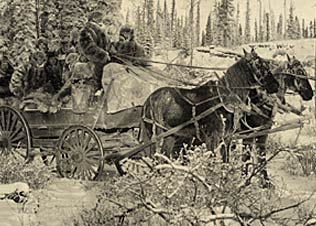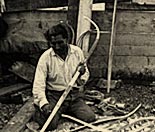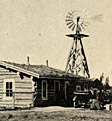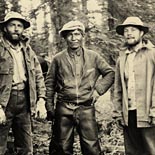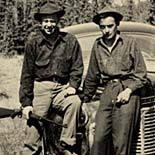Planning a Highway to the North 1920s to 1940s
Between the early twenties and 1939 several intergovernmental commissions were formed to investigate the possibility of building a road between Seattle and Fairbanks to provide overland access to Alaska. Two possible routes through British Columbia were considered and supported by Yukoners, as many of them were not happy with the transportation and shipping monopoly held by the White Pass and Yukon Route Company. However, lack of funds and political interest kept the project in the planning stage.
A group of men poling a scow on the Pelly River near Ross River in July, 1923. Poles, rather than paddles were often used to travel upstream in shallow water. (view more details)
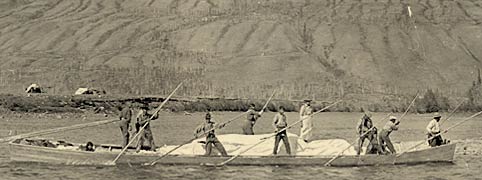
When the Japanese bombed Pearl Harbour in December 1941, the United States became worried about the vulnerability of shipping lanes on the west coast. In order to guarantee a continuity of supplies to Alaska, the Canada-U.S. Permanent Joint Board of Defence met and decided upon a route for a "tote" road between Dawson Creek, B.C. and Fairbanks, Alaska. Canada granted the right of way and the Americans financed and built the road.
The Whitehorse Steam Laundry wagon (view more details)
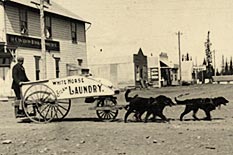
The route was chosen for purely military reasons – because it linked a chain of civilian airports between Edmonton and Whitehorse known as the Northwest Staging Route and because it was far enough from the coast to avoid Japanese bombers. The airports would be used to ferry aircraft to Alaska, while the Alaska Highway would supply the airports, provide a visual flying aid, and a route for a telephone line linking Washington, D.C. with Fairbanks. Ironically, the route was similar to the one "overlander" gold seekers had attempted from Edmonton to the Klondike.
As a single event, the building of the highway had a profound effect on several aspects of life in the far northwest. The resulting system of air, highway and telephone would eventually signal the end of an era of transportation and a way of life for the Yukon. In the half-century following the construction of the Alaska Highway most earlier forms of transportation would survive primarily as tourist attractions or for recreation.
Frost-covered horses and passengers in a wheeled stagecoach along the Overland Trail in early winter. ca. 1910. (view more details)
